Discover what artificial intelligence (AI) is and how it works. Learn about AI’s benefits, challenges, and future potential, including ethical considerations and job impacts. Stay informed and explore the exciting world of AI.
Introduction
Artificial Intelligence (AI) is no longer a concept confined to science fiction; it’s a reality that’s transforming our world. AI is everywhere, from virtual assistants like Siri and Alexa to advanced medical diagnostics.
But what exactly is artificial intelligence, and how does it work? In this blog post, we’ll delve into the fundamentals of AI, explore its core technologies, and uncover how it mimics human intelligence to perform complex tasks.
Whether you’re a tech enthusiast or just curious about the buzz around AI, this guide will provide you with a comprehensive understanding of this groundbreaking technology.
Understanding Artificial Intelligence
Definition of AI
Artificial Intelligence (AI) refers to the simulation of human intelligence in machines. These machines are programmed to think and learn like humans. They can perform tasks such as problem-solving, decision-making, and understanding language.
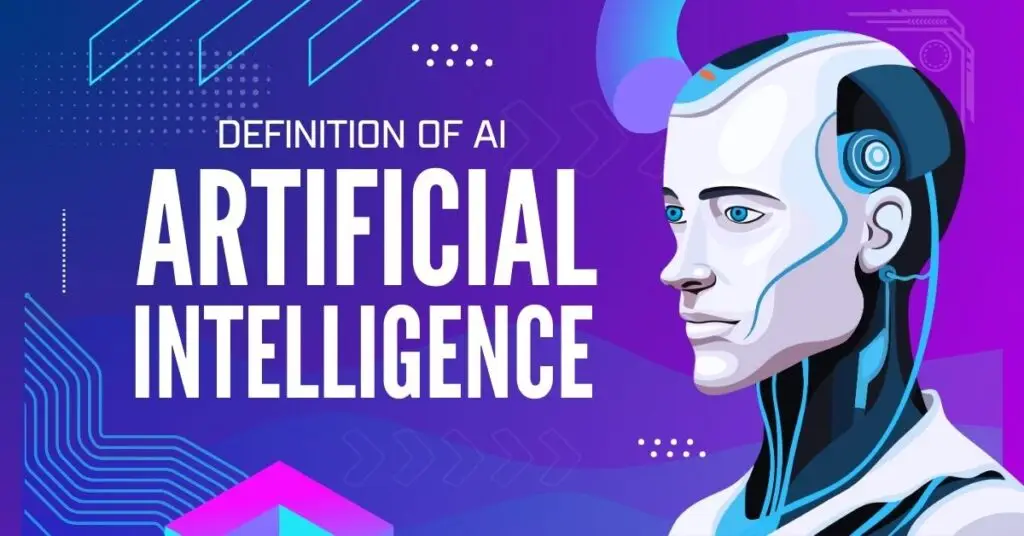
AI is broadly categorized into three types:
Superintelligent AI: Surpasses human intelligence.
Narrow AI: Designed for specific tasks.
General AI: Possesses human-like intelligence across various tasks.
History of AI
The concept of Artificial Intelligence (AI) dates back to ancient myths and stories, but it formally began in the mid-20th century.
In 1956, the term “artificial intelligence” was coined at the Dartmouth Conference, marking the birth of AI as a field of study.
Early milestones include the development of the first AI programs, such as the Logic Theorist and the General Problem Solver.
Over the decades, AI has evolved through various phases, from symbolic AI in the 1950s and 60s to the rise of machine learning and deep learning in recent years.
Core Concepts
- Machine Learning: A subset of AI that enables systems to learn from data and improve over time without being explicitly programmed. Examples include recommendation systems and spam filters.
- Deep Learning: A type of machine learning that uses neural networks with many layers (hence “deep”) to analyze complex patterns in large datasets. It’s used in applications like image and speech recognition.
- Neural Networks: Inspired by the human brain, these networks consist of interconnected nodes (neurons) that process information in layers. They are fundamental to deep learning.
Key Technologies
- Natural Language Processing (NLP): Enables machines to understand and generate human language. Applications include chatbots and language translation services.
- Computer Vision: Allows machines to interpret and make decisions based on visual data. It’s used in facial recognition and autonomous vehicles.
- Robotics: Combines AI with physical machines to perform tasks autonomously. Examples include robotic surgery and warehouse automation.
Data and Algorithms
Data is the lifeblood of AI. Algorithms, which are sets of rules or instructions, process this data to identify patterns and make decisions.
Common algorithms in AI include decision trees, support vector machines, and neural networks. The quality and quantity of data significantly impact the performance of AI systems.
How Artificial Intelligence Works
Core Concepts
Artificial Intelligence (AI) operates through a combination of advanced technologies and methodologies. At its core, AI involves the use of algorithms and large datasets to simulate human intelligence. Here are the key concepts:
Machine Learning (ML): This is a subset of AI where machines learn from data to improve their performance over time without being explicitly programmed. Examples include recommendation systems and spam filters.
Deep Learning: A more advanced form of machine learning that uses neural networks with many layers to analyze complex patterns in large datasets. It’s used in applications like image and speech recognition.
Neural Networks: These are inspired by the human brain and consist of interconnected nodes (neurons) that process information in layers. They are fundamental to deep learning.
Key Technologies
AI leverages several key technologies to function effectively:
- Natural Language Processing (NLP): This technology enables machines to understand and generate human language. Applications include chatbots, language translation services, and voice assistants.
- Computer Vision: This allows machines to interpret and make decisions based on visual data. It’s used in facial recognition, autonomous vehicles, and medical imaging.
- Robotics: AI combined with physical machines to perform tasks autonomously. Examples include robotic surgery, warehouse automation, and drones.
Data and Algorithms
Data is the foundation of AI. Algorithms, which are sets of rules or instructions, process this data to identify patterns and make decisions.
Common algorithms in AI include decision trees, support vector machines, and neural networks. The quality and quantity of data significantly impact the performance of AI systems.
Training and Learning
AI systems undergo a process called training, where they learn from large amounts of data. During training, the system adjusts its algorithms to improve accuracy and performance.
This process involves:
Supervised Learning: The AI is trained on labeled data, meaning the input comes with the correct output. It’s used for tasks like classification and regression.
Unsupervised Learning: The AI is given data without labeled responses and must find patterns and relationships on its own. It’s used for clustering and association tasks.
Reinforcement Learning: The AI learns by interacting with its environment and receiving rewards or penalties based on its actions. It’s used in robotics and game playing.
By understanding these core concepts and technologies, you can appreciate how AI works and its potential to transform various industries.
Applications of Artificial Intelligence
Artificial Intelligence (AI) is transforming multiple sectors by boosting efficiency, precision, and creativity.
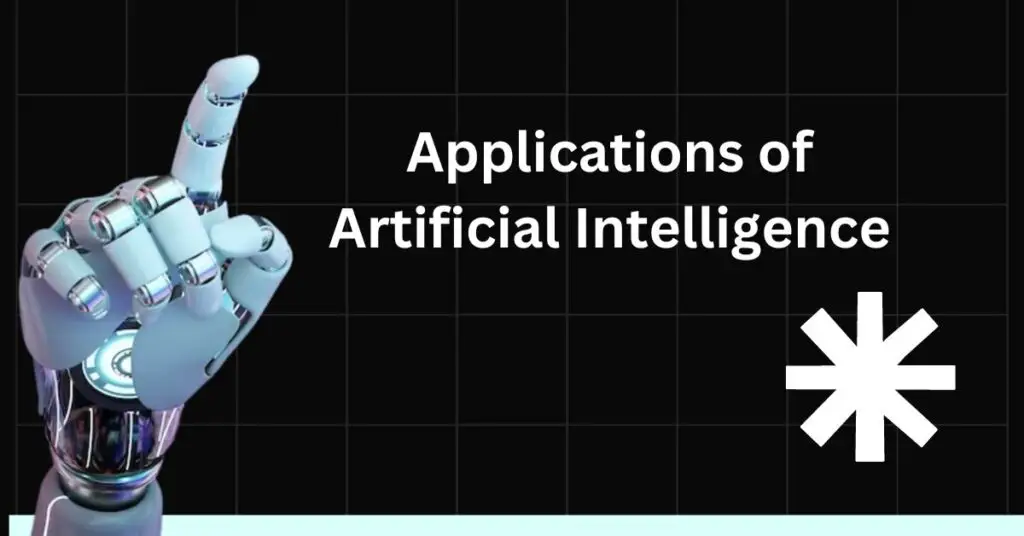
Here are some key applications of AI:
Everyday Applications
- Smartphones: Artificial intelligence powers virtual assistants like Siri and Google Assistant, providing features such as voice recognition and personalized suggestions.
- Social Media: Platforms like Facebook and Instagram use artificial intelligence to curate content, detect false information, and enhance user engagement with personalized advertisements.
Industry-Specific Applications
- Healthcare: AI is transforming healthcare with applications in diagnostics, personalized medicine, and robotic surgery. For instance, AI algorithms can analyze medical images to detect diseases like cancer at an early stage.
- Finance: In finance, AI helps detect fraud, trade automatically, and provide personal financial advice. AI systems can analyze large datasets to spot suspicious activities and predict market trends.
- Transportation: Self-driving cars are becoming a reality thanks to AI. Companies like Tesla and Waymo are developing vehicles that can drive autonomously, handle complex environments, and make roads safer.
- Retail: AI enhances shopping by offering personalized product suggestions, managing inventory, and providing automated customer support. Big online stores like Amazon use AI to optimize their supply chains and improve customer satisfaction.
New Uses
- Agriculture AI is helping improve crop production check soil health and control pests Drones and sensors with AI can give farmers up-to-date information so they can make better decisions
- Education AI tools are making education more personal by changing learning materials based on each student’s needs AI can also handle administrative tasks which lets teachers spend more time on teaching
- Entertainment AI is changing the entertainment industry with uses in creating content suggesting what to watch and enhancing special effects Streaming services like Netflix use AI to recommend shows and movies based on what users like
Future Potential
- Quantum Computing AI working with quantum computing can solve difficult problems much quicker than before creating new opportunities in areas like security and material science
- Internet of Things IoT AI is improving IoT devices by helping them learn from information and make smart choices This combination is creating smarter homes cities and industries
AI is not only transforming existing industries but also paving the way for innovations. As AI continues to evolve, its impact on our daily lives and various sectors will only grow, making it a crucial technology for the future.
Benefits and Challenges of AI
Artificial Intelligence (AI) offers numerous advantages, but it also presents several challenges. Understanding both sides is crucial for leveraging AI effectively and responsibly.
Benefits of AI
- Increased Efficiency and Productivity: AI can automate repetitive tasks, allowing humans to focus on more complex and creative work. This leads to higher productivity and efficiency across various industries.
- Enhanced Decision-Making: AI systems can analyze vast amounts of data quickly and accurately, providing insights that help in making informed decisions. This is particularly beneficial in fields like finance, healthcare, and logistics.
- Innovation and New Solutions: AI drives innovation by enabling the development of new products and services. For example, AI-powered tools in healthcare can lead to breakthroughs in diagnostics and treatment.
- Cost Savings: By automating tasks and improving efficiency, AI can significantly reduce operational costs. Businesses can save money on labor and minimize errors, leading to overall cost savings.
- Improved Customer Experience: AI enhances customer service through chatbots and personalized recommendations. This leads to better customer satisfaction and loyalty.
Challenges of AI
- Ethical Concerns: AI systems can perpetuate biases present in their training data, leading to unfair outcomes. Ensuring ethical AI development requires addressing issues like bias, transparency, and accountability.
- Job Displacement: Automation of tasks by AI can lead to job losses in certain sectors. While AI creates new job opportunities, there is a need for reskilling and upskilling the workforce to adapt to these changes.
- Privacy and Security Risks: AI systems often require large amounts of data, raising concerns about data privacy and security. Protecting sensitive information and preventing misuse is a significant challenge.
- High Implementation Costs: Developing and deploying AI solutions can be expensive. Small and medium-sized enterprises may find it challenging to invest in AI due to the high initial costs.
- Technical Limitations: Despite advancements, AI systems are not infallible. They can make errors, and their performance depends heavily on the quality of data and algorithms used.
businesses and society can harness the power of AI while mitigating its risks. As AI continues to evolve, addressing these challenges will be crucial for its sustainable and ethical development.
How can we address bias in AI systems?
Diverse Training Data: Use diverse and representative datasets to train AI models. This helps reduce biases that arise from skewed or incomplete data.
Bias Detection and Correction: Implement techniques to detect and correct biases in AI models. This can include statistical methods and fairness metrics to identify and mitigate biased outcomes.
Transparency: Ensure transparency in AI algorithms and decision-making processes. This involves documenting how models are trained, what data is used, and how decisions are made.
Regular Audits: Conduct regular audits of AI systems to identify and address biases. This can involve third-party reviews and continuous monitoring of AI performance.
Inclusive Design: Involve diverse teams in the design and development of AI systems. Different perspectives can help identify potential biases and create more equitable solutions.
Ethical Guidelines: Establish and follow ethical guidelines for AI development. This includes setting standards for fairness, accountability, and transparency.
User Feedback: Incorporate user feedback to identify and correct biases. Users can provide valuable insights into how AI systems impact different groups.
By implementing these strategies, we can work towards creating AI systems that are fairer and more inclusive.
The Future of Artificial Intelligence
The future of Artificial Intelligence (AI) holds immense potential, promising to revolutionize various aspects of our lives and industries. Here are some key trends and predictions for the future of AI:
Emerging Trends
- AI in Quantum Computing: Quantum computing, combined with AI, could solve complex problems much faster than classical computers. This synergy could lead to breakthroughs in fields like cryptography, material science, and drug discovery.
- AI and the Internet of Things (IoT): The integration of AI with IoT devices will create smarter homes, cities, and industries. AI will enable IoT devices to learn from data, make intelligent decisions, and improve efficiency.
- AI in Healthcare: The future of AI in healthcare looks promising with advancements in personalized medicine, predictive analytics, and robotic surgery. AI will continue to enhance diagnostics, treatment plans, and patient care.
Predictions
- Widespread Adoption: AI will become more ubiquitous, and integrated into everyday devices and applications. From smart home systems to autonomous vehicles, AI will be a fundamental part of our daily lives.
- Ethical AI Development: As AI becomes more prevalent, there will be a stronger focus on ethical AI development. Ensuring transparency, fairness, and accountability in AI systems will be crucial to gaining public trust.
- Job Transformation: While AI will automate certain tasks, it will also create new job opportunities. The workforce will need to adapt, with an emphasis on reskilling and upskilling to meet the demands of an AI-driven economy.
- Enhanced Human-AI Collaboration: AI will augment human capabilities, leading to enhanced collaboration between humans and machines. This partnership will drive innovation and productivity across various sectors.
- AI in Education: AI will transform education by personalizing learning experiences, automating administrative tasks, and providing real-time feedback to students. This will lead to more effective and efficient educational systems.
Long-Term Impact
- Global Challenges: AI has the potential to address global challenges such as climate change, healthcare accessibility, and food security. By analyzing vast amounts of data, AI can provide insights and solutions to these pressing issues.
- AI Governance: The development of international regulations and standards for AI will be essential to ensure its safe and ethical use. Collaborative efforts between governments, organizations, and researchers will shape the future of AI governance.
- AI and Creativity: AI will continue to push the boundaries of creativity, contributing to fields like art, music, and literature. AI-generated content will become more sophisticated, opening new avenues for creative expression.
The future of AI is both exciting and challenging. By embracing these trends and addressing the associated challenges, we can harness the full potential of AI to create a better, more innovative world.
How can we ensure ethical AI development?
Diverse Training Data: Use diverse and representative datasets to train AI models. This helps reduce biases that arise from skewed or incomplete data.
Bias Detection and Correction: Implement techniques to detect and correct biases in AI models. This can include statistical methods and fairness metrics to identify and mitigate biased outcomes.
Transparency: Ensure transparency in AI algorithms and decision-making processes. This involves documenting how models are trained, what data is used, and how decisions are made.
Regular Audits: Conduct regular audits of AI systems to identify and address biases. This can involve third-party reviews and continuous monitoring of AI performance.
Inclusive Design: Involve diverse teams in the design and development of AI systems. Different perspectives can help identify potential biases and create more equitable solutions.
Ethical Guidelines: Establish and follow ethical guidelines for AI development. This includes setting standards for fairness, accountability, and transparency.
User Feedback: Incorporate user feedback to identify and correct biases. Users can provide valuable insights into how AI systems impact different groups.
Conclusion
Artificial Intelligence (AI) is a transformative technology that is reshaping our world. From enhancing efficiency and productivity to driving innovation and improving customer experiences, AI’s benefits are vast.
However, it also presents challenges such as ethical concerns, job displacement, and privacy risks. By understanding both the advantages and the potential pitfalls, we can harness AI responsibly and ethically.
As we look to the future, the integration of AI with emerging technologies like quantum computing and the Internet of Things (IoT) promises even greater advancements.
AI’s role in addressing global challenges, transforming industries, and enhancing human capabilities will continue to grow. Ensuring ethical AI development and preparing the workforce for an AI-driven economy will be crucial steps in this journey.
AI holds immense potential to create a better, more innovative world. By embracing its possibilities and addressing its challenges, we can pave the way for a future where AI enhances our lives in meaningful ways. Stay informed, stay curious, and be part of the conversation about the future of AI.
FAQ
What is artificial intelligence (AI)?
AI is the simulation of human intelligence in machines designed to think and learn like humans, performing tasks such as problem-solving, speech recognition, and decision-making.
How does AI work?
AI works by using algorithms and large datasets to identify patterns, make decisions, and improve over time. Key technologies include machine learning, deep learning, and neural networks.
What are the types of AI?
AI is categorized into Narrow AI (designed for specific tasks), General AI (human-like intelligence across tasks), and Superintelligent AI (surpassing human intelligence).
What are the common applications of AI?
AI is used in various fields, including healthcare (diagnostics), finance (fraud detection), transportation (autonomous vehicles), and everyday tech (virtual assistants).
What are the challenges of AI?
Challenges include ethical concerns (bias, privacy), job displacement, and security risks. Addressing these issues is crucial for responsible AI development.

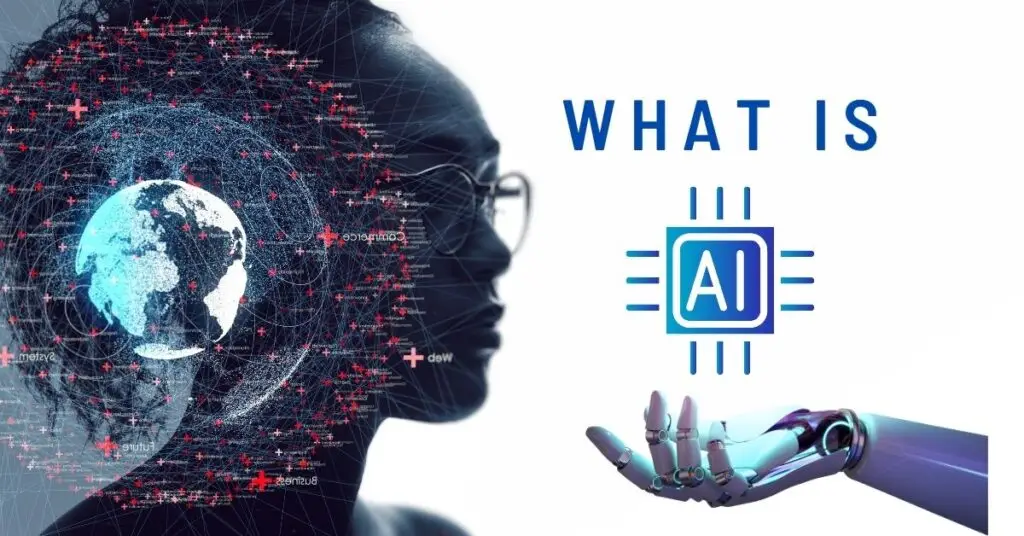
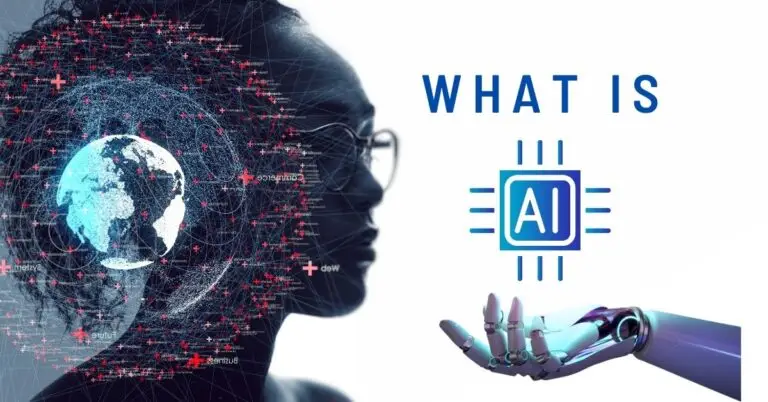
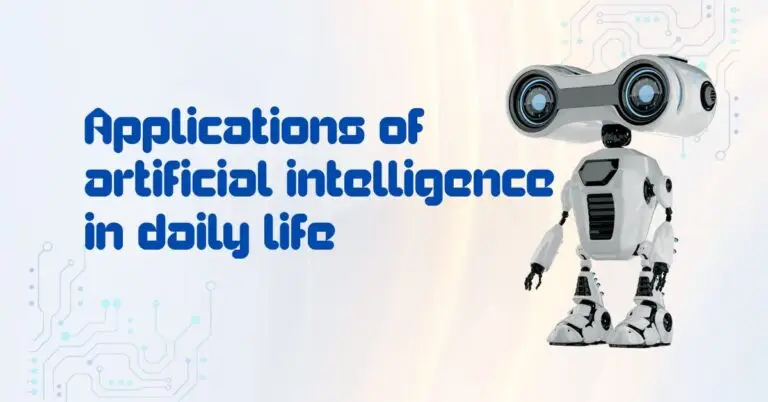
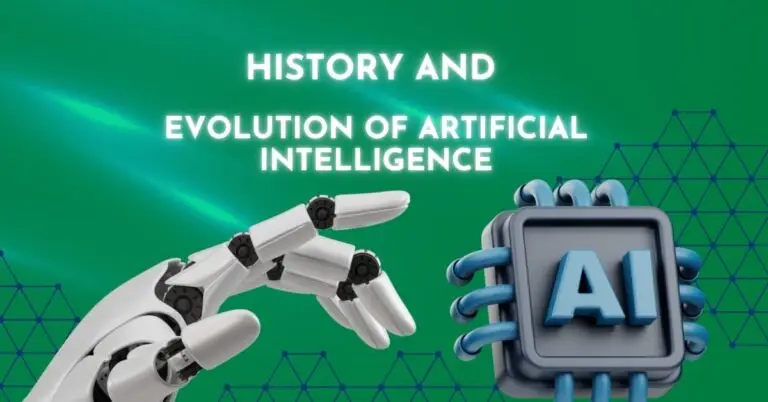

5 thoughts on “What is Artificial intelligence and how does it work?”